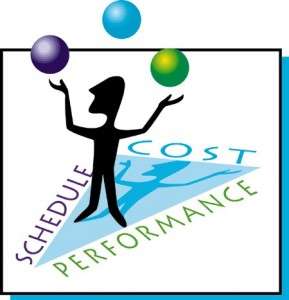What are Performance Metrics Examples?

Leaders work on understanding and improving the system through performance metrics or measures. Anytime I bring up the question of measures, people always ask “what’s a good measure?” The answer is, it depends on the type of business you operate. But it always starts with your purpose — what are you in business to do?
Performance Metrics Examples
What do your business metrics say about your business? Management leadership is about not settling for less. In order to not settle for less, we need a target or set of performance metrics for your organization that defines the performance we want. Two important performance metrics are inventory turns and speed and flow — both are associated with your organizational purpose.
There are really three types of businesses you can operate: manufacturing without research and design, manufacturing with research and design, or a service organization. Each one differs in the type of measures that are needed to manage performance metrics.
Manufacturing Metrics Without Design
The first speed and flow metric for most is inventory turns, which is a composite measure of your purchasing, manufacturing, and sales/marketing cycles. Composite measures are great for bringing together three core areas of the manufacturing business model. The only way to drive inventory down (increase turns) is by eliminating delays, bottlenecks, and inefficient processes.
Order-To-Delivery Time
The second is order-to-delivery times, which is another composite measure of your material and information flows. It is defined as the time from when you receive/take an order to the time the order ships (or is received by the customer). Material flow is measured by inventory turns. The information flows for processing an order include IT policies, sales, marketing, order-entry, purchasing, scheduling, quality assurance, and the picking and packing for shipment.
For most companies information flows quickly, but only to the next queue where the information sits, waiting for someone to touch it and move it along to the next person.
Order-To-Delivery Cycle
How long is your order-to-delivery cycle? I have found it pretty common for companies to have a five-, eight- or 15-day order-to-delivery cycle yet their manufacturing process is simple enough that product can be made in less than one day. What makes up the rest of the delays? Information flows no doubt.
Manufacturing Metrics with Design
If you are a manufacturer that performs research and design, then you should add accuracy & customer value to your inventory turns and order-to-delivery measures. This will introduce an important measure for designing to customer requirements (accuracy) in a cost effective manner (customer value).
Service Metrics
Service organizations usually do not have inventory. But they do have order-to-delivery times, and accuracy & customer value measures. Focus on end-to-end times for the service process in question. How long a service takes, from end-to-end, is a crucial measure of a service organization’s performance.
Organizational Metrics
Most companies can also benefit by developing metrics for customer demand, internal capacity to meet demand, and process capabilities (predictability of performance). Notice we have not talked about measure for revenue (management’s vanity), profit (management’s pride), or cash-flow (managements life blood).
Revenue and profit are illusions using accrual based accounting. Cash-flow, on the other hand, is everything. You can’t pay your employees and suppliers in revenue or profit but you can pay them in cash. But these are also lagging indicators of performance. They tell us what happened yesterday and not what is causing the problems. If you focus on the leading indicators for measuring organizational success, like speed and flow, then you will be creating a cash-flow machine.
Example Performance Metrics
We have discussed speed and flow metrics associated with your organizational purpose. We started with inventory turns, added order-to-delivery and accuracy & customer value. Each of these is really looking at end-to-end times (cycle), which can be used as a general measure of performance for any process. When creating measures, just make sure they are helping you increase your speed and flow while achieve your organizational purpose. That’s Organizational Leadership.















Leave a Reply